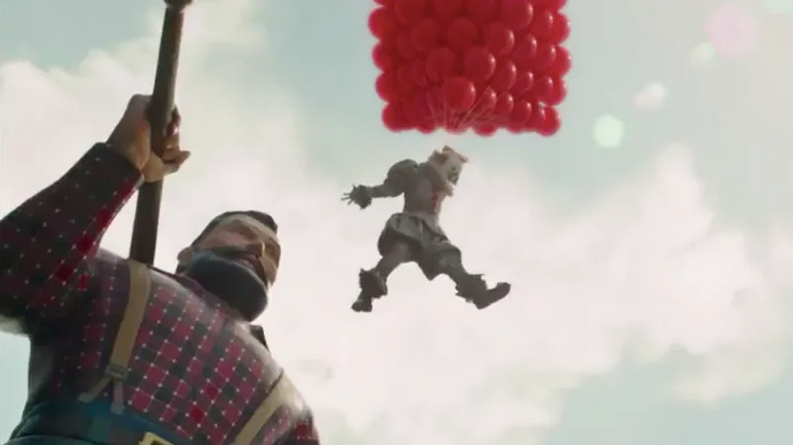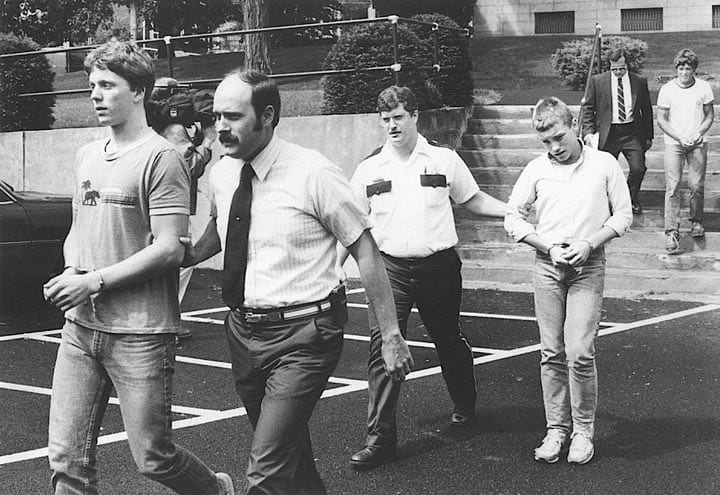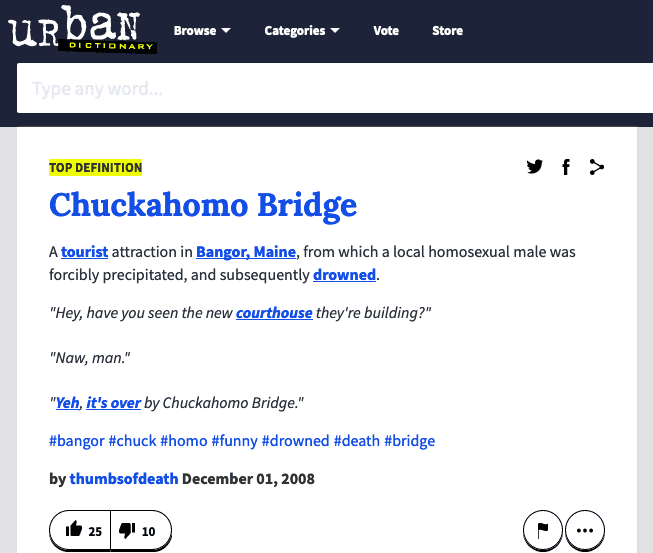
Not only is Stephen King a magnificent horror writer, but he’s also a great community member.
Growing up in Old Town, Maine, we would have the chance to ride by Stephen King’s residence in Bangor, just about 12 miles from my home. Stephen and his family have a deep history in Bangor and the surrounding cities. My mother went to school with his to be wife Tabitha who would stop most days at the Old Town Public Library on her walk from school to home. The King Family, under the family name, Tabitha’s, or Stephen’s, have donated millions to Maine cities’ public libraries. You can see King at many University of Maine sporting events, mainly men’s baseball games, and his sons were very active in the area little leagues, with Stephen King building a professional-quality Little League baseball diamond just a few blocks behind his home where wold championships have been held. Thanks Stephen and fam!
The Kings pull a great deal of content from their personal experiences in Maine, but often write them into New Hampshire towns in their books. Mainers know when things are about their state in the Kings’ books and it makes us proud, squeamish, and excited. I had never read It, but I did see the television adaptation and the recent blockbuster and highest grossing horror movie of all time. What I did not know is Stephen King’s original It book portrayed a real-life event that kept many gay Maine men and other LGBTQ in the closet and on edge for years to come.

“Chuckahomo Bridge” – It was a name I heard so many times growing up in Maine. It’s vulgar, hateful, but it was the nickname given to a bridge in downtown Bangor back in the 1980s and I am sure is still used to this day. Just about two miles from Stephen King’s own home, an incident that occurred on that bridge in 1984 would make it into his It horror novel. A real-life horror incident that gay men from central and northern Maine would have to live with daily.
Shawn Mabry and a buddy sat on a beach in Daytona, Fla., in 1989 and saw a biker with a T-shirt that read “Chuckahomo Bridge — Bangor, Maine.” When the biker learned who Mabry was, he patted him on the back and asked him to sign his shirt.
Mabry says he refused.
To the biker, Mabry was a hero to be acclaimed and commended. Even today, closer to home, there are those who meet Mabry and want to shake his hand.
[The shirt reminded them] of the event that thrust Mabry into the spotlight and made a murder victim named Charlie Howard an unwitting symbol of the gay community. As reports of Howard’s death spread throughout the nation, Bangor was suddenly labeled a place of hatred and redneck pride.
The year was 1984. Headlines across the country screamed “A gentle man’s death bares town’s rough side” and “A city and its sins.” – Bangor Daily News
On July 7, 1984, Charlie Howard was beaten within an inch of his life and pushed over the side of a bridge and was left to die. It readers know this scene as a key moment in Derry history when a gay man watches in terror as his partner Adrian is brutally beaten by a group of homophobes before they push him over the side of a bridge. King based this scene in the book on the real-life occurrence and death of Charlie Howard. Charlie was pushed off the bridge and into relatively shallow water.
Here is an excerpt from some amazing coverage the Bangor Daily News did 5 years ago on the 30th anniversary of Charlie Howard’s death. It is a recommended read and viewing of the videos and pictures.
Charlie Howard, 23, was a native of Portsmouth, New Hampshire. He had moved to Bangor from Ellsworth earlier that year. He was a member of the Unitarian Church, now the Brick Church, at First and Union streets in Bangor.
Friends remember Howard as a free spirit who experienced trouble in his schooling and frequently was bullied.
The church was one of the few places in 1980s Bangor where gays and lesbians felt they could be open about their sexuality. For example, Kay Wilkins, a lesbian, was out at church but not at Bangor High School, where she was a special education teacher.
On the evening of July 7, 1984, Howard had attended a potluck supper at the church. Later that night, about 10:30 p.m., he was walking along State Street in downtown Bangor, arm-in-arm with his friend Roy Ogden. They were going to the Margaret Chase Smith Federal Building on Harlow Street to pick up Howard’s mail from his post office box.
That’s when three young men crossed their path.

The fall from the bridge and into the Kenduskeag Stream (canal) did not kill him directly, but it is believed that the beating and the fall caused Charlie to have an asthma attack, contributing to his eventual drowning. It Chapter Two, will include the victim be depicted as an asthmatic in order to add more of his actual story to the real-life event.
Charlie Howard’s killing was a turning point for the Bangor community, but unfortunately it was actually two turning points. One part of the community went further into the closet or moved away from Bangor while others did take Howard’s death as a point to rally around and try to move forward and upward. This year, the 35th anniversary of his death, Bangor took the time to honor and remember Charlie Howard.
It Chapter Two director Andy Muschietti stated:
In King’s original novel, the man, Adrian, survives the fall…but not what’s waiting for him under the bridge: Pennywise the Dancing Clown, who will eat adults in a pinch if and when he gets peckish. Adrian’s boyfriend is helpless to do anything as he sees the demonic entity sink its teeth into his partner and drag him off to his death.
The scene’s important because it establishes the insidious way that Pennywise is able to both amplify and feed off the negative energy that exists within people, but it also speaks to the culture of Derry itself, a town that does have its fair share of homophobic residents.
“It’s one of the things that really caused a deep impact on Stephen King when he was writing It. So, he decided to include it. Of course, the names are changed, but the beating happened almost exactly like it’s described in the book, and Charlie died in three feet of water in the canal.”
Screenwriter Gary Dauberman described the homophobic attack as “an iconic scene in the book” and said they were adamant it would be featured in the movie.
It is the first attack in present-day Derry and sets the stage for what Derry has become.
It is the influence of Pennywise even while he is hibernating, and it’s pure evil what happens to Adrian. These bullies working through Pennywise was important for us to show. – The Hollywood Reporter
For me, the Charlie Howard event was scary, threatening, and put up more barriers for me being me for many years. In 1984, I was in the 4th grade and knew I was gay. But for many years to follow and I am sure to this day, Chuckahomo Bridge was/is used quite often. In years following 1984, Halloween costumes consisting of men in life jackets were popular as to say if you’re gay, you better be ready to get thrown off a bridge, not just Chuckahomo Bridge, ‘cuz it’s Bangor, Maine. Trying to meet another gay person in the Bangor area would always be laced with thoughts of that hate crime, before hate crimes were hate crimes, 14 years before Matthew Shepard. Even trying to meet men in the mid to late ’90s was something you did with caution and showing affection outside of the only gay bar in Bangor, The Spectrum, was sometimes risky or maybe it was just paranoia. The term even made it to Urban Dictionary in 2008.

It will be a scene in It Chapter Two that will most likely be hard to watch for more reasons than it just being a horror scene and a hate crime, but knowing that it portrays an actual event in anti-LGBT Maine history.
What do you think of Stephen King including a real-life hate crime in his book and now its inclusion in It Chapter Two? Should it be added? Should it be left out?
Source: Gizmodo.com , Bangor Daily News , The Hollywood Reporter
